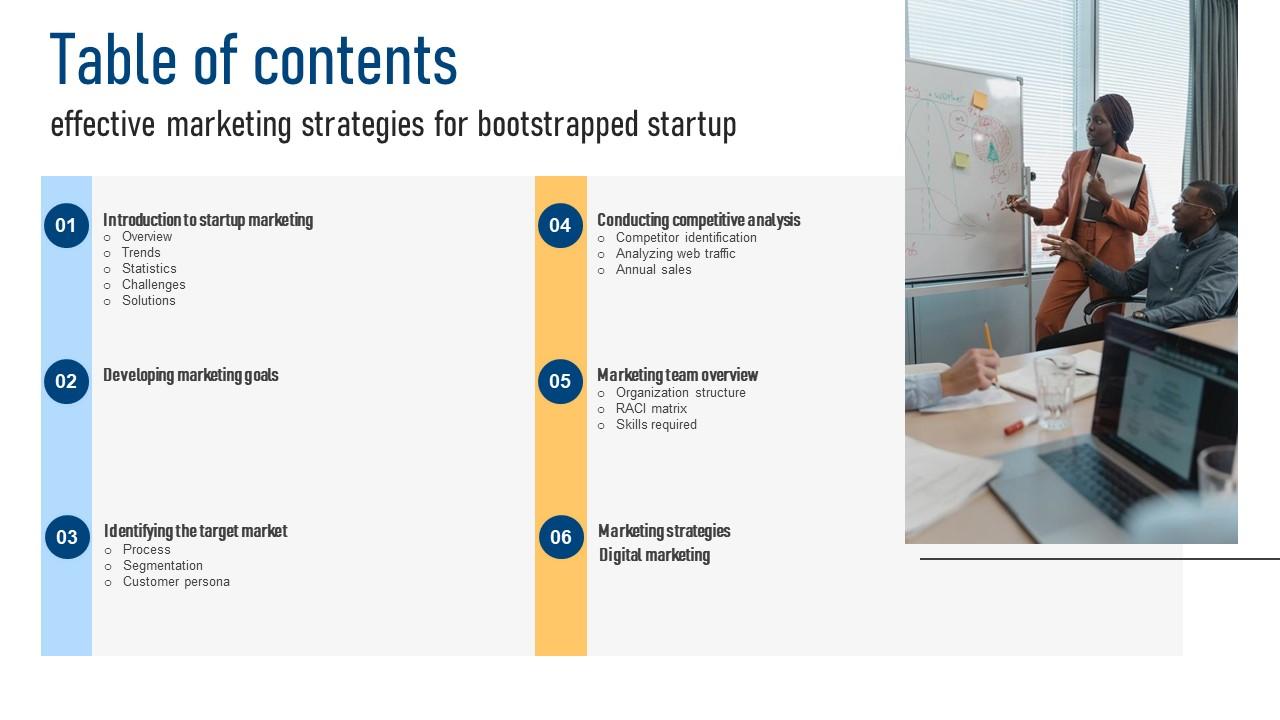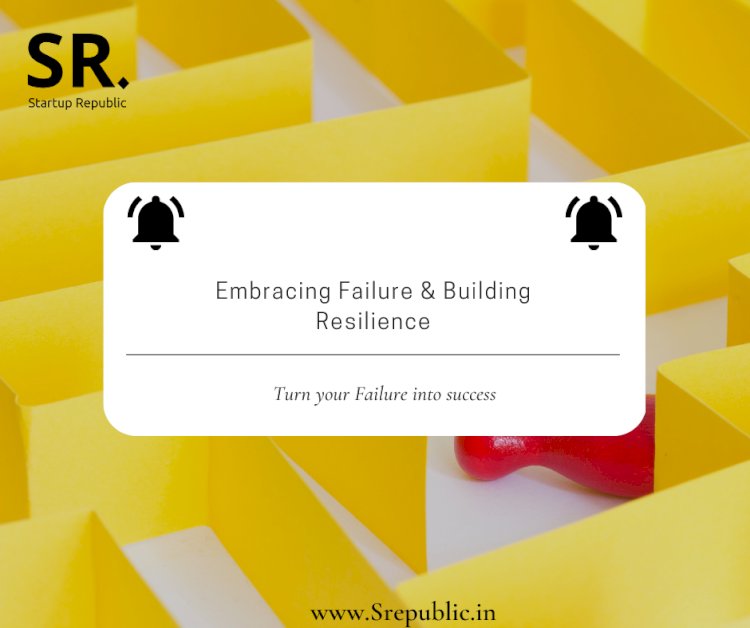
Strategic Planning for Bootstrapped Startups: Your Blueprint for Lean Growth
Starting a business is exhilarating. You’re fueled by passion, innovation, and an unwavering belief in your idea. But for bootstrapped startups – those running on self-funding, personal savings, or early revenue – every dollar, every hour, and every decision carries immense weight. You don’t have the luxury of a massive marketing budget or a dedicated strategy department. This is where strategic planning becomes not just a good idea, but an absolute necessity.
Far from being a rigid, corporate exercise, strategic planning for a bootstrapped startup is about creating a clear, adaptable roadmap. It’s your GPS in the often-foggy world of entrepreneurship, ensuring you’re always moving in the right direction, even when resources are tight.
Why Strategic Planning is Even More Vital for Bootstrapped Startups
You might think, "I’m lean, I’m agile, I don’t need a stuffy plan!" But consider these critical reasons why strategic planning is your secret weapon:
- Resource Optimization: When every penny counts, you can’t afford to waste money on ineffective marketing, misguided product development, or unnecessary hires. Strategic planning forces you to prioritize and allocate your limited funds to activities that directly support your most important goals.
- Focused Effort: Bootstrapped founders often wear many hats. Without a clear strategy, it’s easy to get distracted by "shiny object syndrome" – chasing every new idea or trend. A strategic plan provides a filter, helping you say "no" to things that don’t align with your core vision.
- Faster, Smarter Decisions: When you understand your mission, vision, and goals, decision-making becomes quicker and more confident. Should you build feature A or feature B? Should you target market X or market Y? Your strategy provides the answers.
- Agility and Adaptability: A common misconception is that a plan is rigid. For bootstrapped startups, it’s the opposite. A well-defined strategy, built on core principles, allows you to pivot intelligently when market conditions change, rather than flailing blindly. You know why you’re pivoting and what you’re pivoting towards.
- Measuring Progress: How do you know if you’re succeeding if you don’t know what success looks like? Strategic planning defines your key performance indicators (KPIs) and milestones, allowing you to track progress, learn from failures, and celebrate wins.
- Attracting Early Supporters: While you’re bootstrapped, you’ll still interact with potential co-founders, early employees, or even future investors. A clear, compelling strategy demonstrates your foresight and commitment, making them more likely to buy into your vision.
The Lean Strategic Planning Process: A Beginner-Friendly Guide
Forget the 100-page binders. For bootstrapped startups, strategic planning is about clarity, simplicity, and actionable steps. Here’s a streamlined process:
Step 1: Define Your North Star – Vision, Mission, and Values
This is the foundation of everything you do.
-
Vision: Your ultimate aspiration. What does the world look like when your startup has achieved its grandest success?
- Example: "To make sustainable living accessible and affordable for every household."
-
Mission: Your purpose. Why do you exist? What do you do, for whom, and what is the outcome?
- Example: "We provide high-quality, eco-friendly household products directly to consumers, empowering them to reduce their environmental footprint without compromising on convenience or cost."
-
Values: Your guiding principles. What beliefs will govern your decisions and actions, even when it’s tough?
- Examples: Integrity, Customer-centricity, Innovation, Sustainability, Simplicity.
-
Action for Bootstrapped Startups: Don’t overthink this. Jot down a few sentences. These should resonate with you and be easy to communicate to others.
Step 2: Understand Your Landscape – Lean Analysis
You don’t need expensive market research firms. You need to be resourceful.
- Know Your Customer (Ideal Customer Profile – ICP):
- Who are they? (Demographics, psychographics)
- What problems do they have that you solve?
- Where do they hang out (online and offline)?
- How do they currently solve their problem (if at all)?
- Lean Approach: Talk to potential customers! Conduct informal interviews, send out simple surveys, observe online communities.
- Know Your Competitors:
- Who are they? (Direct and indirect)
- What do they do well? What are their weaknesses?
- How do they price their products/services?
- What’s their unique selling proposition (USP)?
- Lean Approach: Google searches, visit their websites, read customer reviews, follow them on social media.
- SWOT Analysis (Simple Version):
- Strengths: What do you do really well? What unique advantages do you have? (e.g., personal expertise, niche market, low overhead).
- Weaknesses: What could you improve? What limitations do you face? (e.g., limited budget, small team, lack of brand recognition).
- Opportunities: What external factors could you leverage? (e.g., emerging market trend, new technology, underserved customer segment).
- Threats: What external challenges could harm your business? (e.g., new competitor, economic downturn, changing regulations).
- Lean Approach: Brainstorm with a co-founder or a trusted mentor. Don’t spend more than an hour on this.
Step 3: Set SMART Goals
Goals are your targets. SMART goals ensure they are actionable and measurable.
-
Specific: Clearly defined, no room for ambiguity.
-
Measurable: Quantifiable, so you can track progress.
-
Achievable: Realistic given your resources and timeframe.
-
Relevant: Aligned with your overall vision and mission.
-
Time-bound: Has a deadline.
-
Examples of SMART Goals for a Bootstrapped Startup:
- Instead of: "Get more customers."
- Try: "Acquire 50 paying customers for Product X by the end of Q3 through targeted social media advertising."
- Instead of: "Improve my website."
- Try: "Increase website conversion rate from 1% to 2.5% by optimizing the product page and checkout flow by December 31st."
- Instead of: "Launch my product."
- Try: "Successfully launch the MVP of our SaaS platform to 10 beta testers by October 15th, gathering qualitative feedback from at least 7 of them."
-
Action for Bootstrapped Startups: Focus on 1-3 major goals for the next 3-6 months. Don’t overwhelm yourself.
Step 4: Develop Your Strategy – The "How"
This is where you outline the broad strokes of how you’ll achieve your SMART goals, leveraging your strengths and opportunities.
-
Value Proposition: What makes you different and better than the competition in your customer’s eyes? Why should they choose you?
- Example: "We offer the most affordable, locally sourced organic produce delivery, saving busy professionals time and supporting local farms."
-
Core Strategies/Pillars: What are the 2-3 main areas you’ll focus on?
- Examples:
- Product/Service Strategy: What features will you prioritize? What’s your minimum viable product (MVP)?
- Marketing & Sales Strategy: How will you reach your target customers with minimal budget? (e.g., content marketing, social media organic growth, word-of-mouth referrals, strategic partnerships).
- Operations Strategy: How will you deliver your product/service efficiently? (e.g., lean inventory, outsourcing non-core tasks).
- Financial Strategy: How will you manage cash flow? What’s your pricing model?
- Examples:
-
Action for Bootstrapped Startups: Keep it high-level. For each goal, sketch out the primary approach. "To acquire 50 paying customers, we will focus on organic social media content and a referral program."
Step 5: Build an Action Plan – The "What" and "When"
Now, break down your strategies into concrete tasks. This is where the rubber meets the road.
- For each strategic pillar, list specific actions.
- Assign responsibility (even if it’s just you!).
- Set deadlines.
| Goal (e.g., Acquire 50 paying customers) | Strategy (e.g., Organic Social Media + Referral Program) | Action Steps | Responsible | Deadline |
|---|---|---|---|---|
| Organic Social Media | Create 15 pieces of engaging content for Instagram | Founder | End of Month 1 | |
| Research 5 relevant hashtags | Founder | Week 2 | ||
| Engage with 10 potential customers daily | Founder | Ongoing | ||
| Referral Program | Design simple referral landing page | Founder | End of Month 2 | |
| Announce program to existing users | Founder | Week 1, Month 3 |
- Action for Bootstrapped Startups: Use a simple spreadsheet, Trello board, or even a notebook. Focus on the next 30-90 days. Don’t plan too far out, as things will inevitably change.
Step 6: Implement, Monitor, and Adapt
A plan is useless if it just sits on a shelf. This is the most crucial step for bootstrapped success.
- Implement: Start working on your action steps immediately.
- Monitor: Regularly review your progress against your goals and KPIs.
- Are you hitting your targets?
- What’s working? What isn’t?
- Lean Approach: Set aside 30 minutes each week to review progress. Use free tools like Google Analytics, social media insights, or a simple spreadsheet to track your numbers.
- Adapt (The "Agile" Part): Based on what you learn from monitoring, be prepared to adjust your plan.
- Pivot: A significant change in your strategy, product, or target market if your current path isn’t working.
- Iterate: Smaller, continuous improvements to your product, marketing, or operations.
- Lean Approach: Don’t be afraid to change course. The market will tell you what it wants. Listen to your customers and your data.
Key Principles for Bootstrapped Strategic Planning
- Stay Lean & Agile: Your plan should be a living document, not carved in stone. Be ready to pivot based on feedback and data.
- Customer-Centricity: Always, always, always put your customer at the heart of your strategy. Solve their problems.
- Focus on Value Creation: Every action should aim to deliver tangible value to your customers and move your business forward.
- Embrace Constraints: Your limited budget and resources are not just challenges; they are catalysts for creativity and innovation.
- Measure Everything (You Can): Even simple metrics can provide powerful insights into what’s working and what’s not.
- Don’t Over-Plan, Over-Execute: The goal is to move forward, learn, and iterate, not to create a perfect plan.
Common Pitfalls to Avoid
- Analysis Paralysis: Spending too much time planning and not enough time doing.
- Ignoring Market Feedback: Sticking to your original plan even when the market is telling you it’s wrong.
- Lack of Specificity: Goals and actions are too vague to be measured or acted upon.
- Trying to Do Too Much: Overwhelming yourself with too many goals or initiatives. Prioritize!
- Setting and Forgetting: Creating a plan and never revisiting it.
- Copying Competitors Blindly: Your unique strengths and market position should drive your strategy, not just what others are doing.
Conclusion
Strategic planning for bootstrapped startups isn’t about bureaucracy; it’s about clarity, focus, and survival. It’s about maximizing your limited resources to achieve maximum impact. By taking the time to define your vision, understand your landscape, set SMART goals, and build an actionable, adaptable plan, you’re not just building a business – you’re building a resilient, intelligent machine designed for lean growth and long-term success.
So, grab a notebook, open a simple document, and start mapping your journey. Your bootstrapped success story starts with a smart, simple strategy.



Post Comment